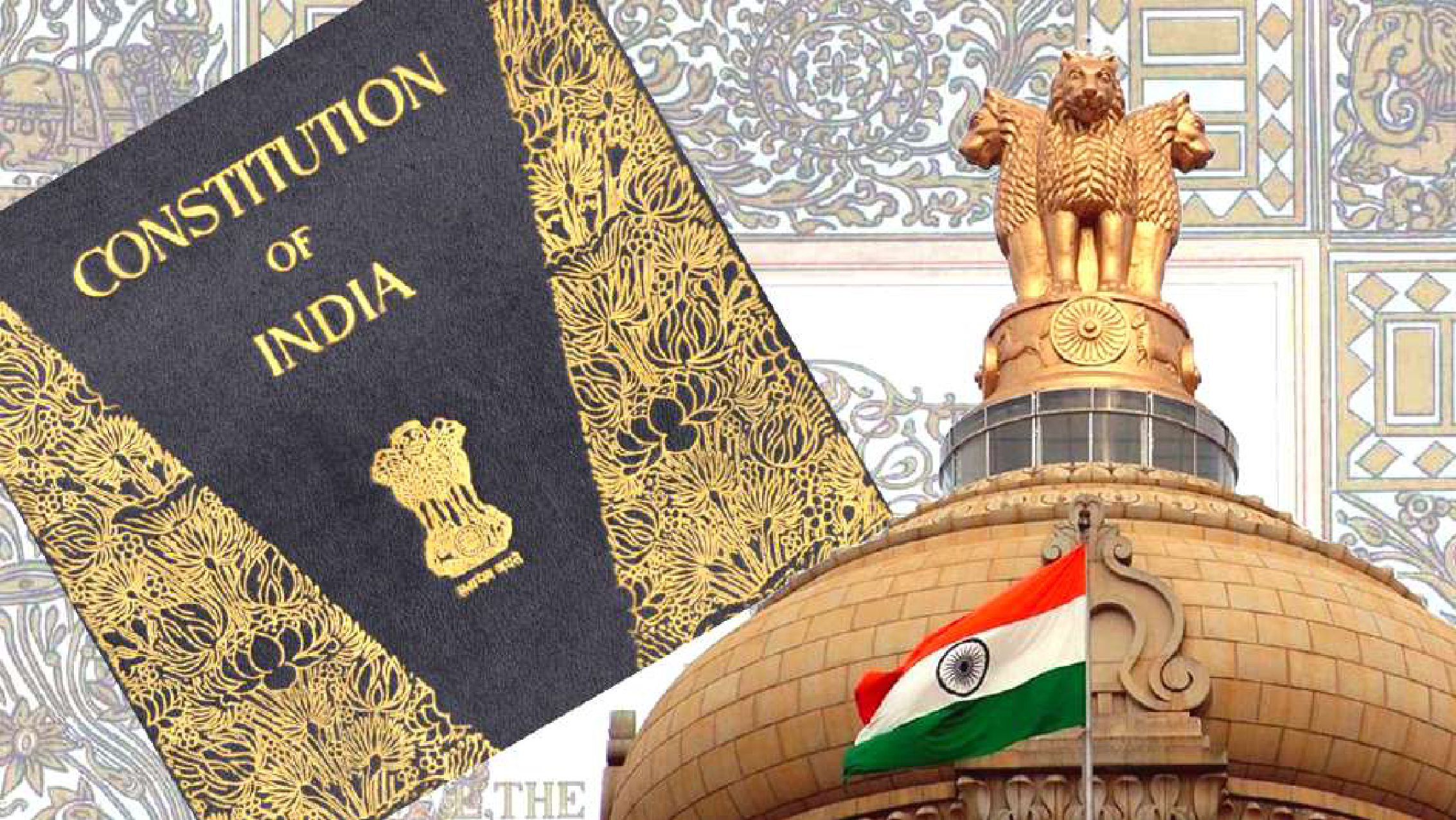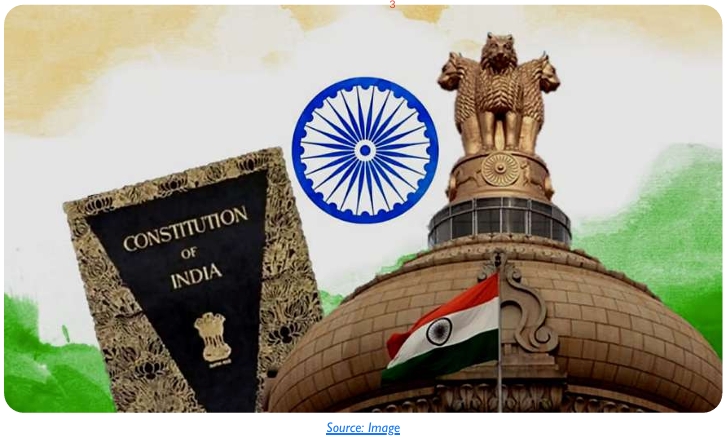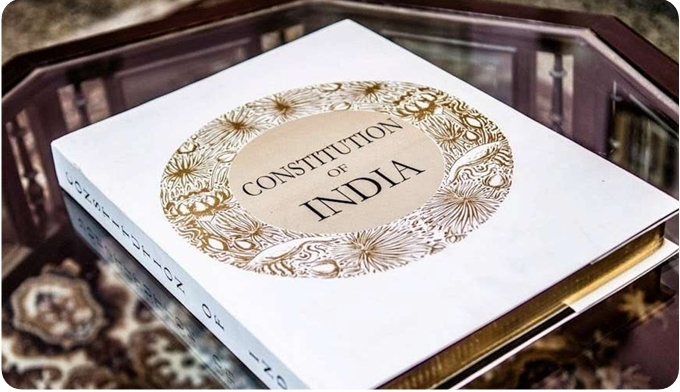Background
The history of land acquisition in India carried out under the sanction of a formal state structure began in the colonial era. The first formal law was the Bengal Regulation I of 1824 whose sole objective was to promote British commercial interests53 . After the introduction of railways, legislation was needed to acquire land for its development, which was done under the said Regulation and finally the first Railway came up in 1853. Later, the Bengal Regulation I of 1824 was replaced by Act I of 1850, which extended some provisions of the 1824 Act to the Calcutta Presidency. Meanwhile, there were similar legislations enacted in the presidency towns of Bombay and Madras54 .
By 1857 the need for construction of railways and other public purpose was increasing and various laws on land acquisition were consolidated into a single law, known as the Land Acquisition Act, 1857 for Railways and other Public Purposes, and it was made applicable to the whole of British India. However, the 1857 Act had many procedural problems to overcome which a new act was passed by the Government in 1870 called The Land Acquisition Act, X of 1870.As with the 1857 Act, the Land Acquisition Act 1870 was also found to be dissatisfactory. The drawbacks of the 1870 Act ultimately led to it being repealed and replaced by The Act of 1894.
The 1894 Act was enacted with the definite objective of building infrastructure like railways, telegraph lines, roads, bridges, canals, communication network and means to transfer the army and weaponry to different parts of the country55 . The basic intention was to extend, control and further consolidate British rule throughout the country. Since its inception it laid out certain key principles in the process of land acquisition that continued to form the foundation of state policy much after independence until as late as 201356 .
Most importantly it established the principle of eminent domain.Additionally, the phrase ‘public purpose’ was defined under section 3(f) as including the need for sites of planned development, extension or establishment of new villages, town planning, pursuing a government scheme or policy, housing for the poor and/or people affected by natural calamities, building of public or government offices, and for any other development scheme or plan, including construction of railways, irrigation canals, etc57 . Even after independence and the adoption of the Indian Constitution, the1894 Act continued to be in force, but with periodic amendments58 . But the Land Acquisition Law of 1894 continued to remain the basic Act from which land acquisition decisions were derived.
After liberalisation of the Indian economy in the 90s the role of the private sector increased and it started taking responsibilities which were earlier discharged by the government. As a result a large number of acquisitions were made for companies under Part VII of the 1894 Act proposing to use the land for a public purpose59 .While eminent domain was still central and public purpose needed to be considered, the term public purpose became a subject of multiple interpretations. Further, with the enactment of the Special Economic Zone Act, 2005, political parties, industrialists, and global agents all came together to enable land acquisition under the pretext of globalization, alienating people from their own natural resources60 . All this led to a number of protests all across the country.
Following continued criticism of the 1894 Act, and people’s movements protesting forced land acquisition, in 2006 the National Advisory Council (NAC) drafted a National Development, Displacement and Rehabilitation Policy.This document drew heavily on a draft presented by the National Alliance of People’s Movements (NAPM)61 .This report led the UPA government to finally introduce the LAA (Amendment) Bill and the Rehabilitation & Resettlement Bill in 2007, which proposed to make the Resettlement and Rehabilitation policy an integral part of the land acquisition process62 .The 2007 amendment Bill was passed in Lok Sabha as the Land Acquisition (Amendment) Act, 2009, but the government did not have the required majority in the Rajya Sabha to pass the Bill.
In 2011 owing to increasing pressure from NGOs and international organizations, the UPA- II government appointed the National Advisory Council to prepare a new draft for Land Acquisition. On recommendations of NAC to combine the two Bills, a comprehensive Land Acquisition, Rehabilitation and Resettlement Bill was introduced to replace the existing Land Acquisition Act 1894 to bring the process of land acquisition and subsequent rehabilitation into the ambit of one single law63 . The Resettlement and Rehabilitation Bill, 2011 was introduced in Lok Sabha on 7 September, 2011. Certain key new elements introduced in this Bill included the increase in compensation values to four times the market price of land in rural areas, and two times the market value in urban areas64 . While it limited the acquisition of land for public purposes only, it included private companies as well as public-private partnership projects within the ambit of the law, requiring the consent of 80 per cent of displaced people in this case65 . Consent was to be sought through gram sabhas, or village assemblies, as per existing Panchayati Raj institutions and laws, including PESA66 . Social Impact Assessment was to be conducted in the case of all land acquisition. This Bill was a far more comprehensive Bill taking into account several of the key demands of displaced and affected populations.The law that was finally passed in 2013 came to be known as the Right to Fair Compensation and Transparency in Land Acquisition, Rehabilitation and Resettlement Act 2013 (RFCTLARR 2013).
In May 2014, as the Bharatiya Janata Party-led National Democratic Alliance (NDA) came to power through its development-driven agenda, and sought to bring about immediate reforms in land acquisition procedures.The amendments that were proposed would remove a lot of the protections, safeguards, and checks and balances introduced in the 2013 law. Specifically being sought was the expansion of the set of exceptions to the requirement of SIA and informed consent to include industrial corridors, infrastructure projects under public-private partnership, as well as electrification of villages and provision of housing for the poor, amongst others. To facilitate its economic agenda, the government promulgated the land acquisition amendment ordinance in December 2014 with a view to introducing legislation in the Budget session of parliament67 .The 2015 land acquisition amendment Bill was eventually tabled in the parliament in February and passed in the lower house in March amidst heavy opposition both within and outside the parliament68 .
Post the passing of the Bill in the Lok Sabha the opposition parties continued their protest against the Bill and in May 2015 the Lok Sabha referred the Bill to a joint parliamentary committee. Meanwhile, in June the government once again promulgated an ordinance which was challenged in the Supreme Court by three Delhi based NGOs69 . Thereafter, in August the JPC submitted its report and recommended that the government withdraw six key amendments, including the plan to remove the consent clause and the social impact assessment70 . Subsequently, the government said it would let the ordinance lapse and would allow the states to amend the RFCTLARR in effect allowing the states to remove or change the clauses in the Act71 .
Since then, owing to large-scale farmers’ protests and political opposition, the government has been unable to have these amendments passed in the Parliament. Social movements protesting forceful land acquisition have mobilized all across the country to ensure transparency and make the state accountable in the land acquisition process. However, at the same time these laws are constantly being sought to be reversed by dominant forces in order to dilute the process of acquisition under the pretext of development. Several states have implemented changes which severely compromise the scope of the Act.These changes have been executed through Rules under Section 109 of the Act, or have enacted their own state level land acquisition legislations using Article 254(2) of the Constitution of India72 .
States which have enacted their own law, have managed to override the provisions of the central law, such as those related to consent and Social Impact Assessment. A 2018 RTI by CSE revealed that seven states including Tamil Nadu,Telangana, Gujarat, Haryana, Maharashtra, Jharkhand and Andhra Pradesh, had bypassed the law and implemented their own Acts by replicating the 2014 Ordinance73 .
Key Issues
Dilution by States: Many states have made amendments to the 2013 Act incorporating changes introduced by the ordinance which had lapsed in These amendments compromise the scope of provisions related to consent, Social Impact Assessment (SIA), food security and higher compensations and restrict the applicability of The Act at the state level74 . The changes have been made through Rules under Section 109 of the Act, or using Article 254(2) which allow instances for states to override central legislations provided they receive presidential assent75 . In the present case this has meant doing away with the provisions of consent and Social Impact Assessment. Some states have also framed rules which are completely different from the provisions of the Act. For instance, the multiplier factor of compensation for rural land in Haryana, Chhattisgarh, and Tripura has been kept at 1.00, (instead of 4) thus reducing the compensation amount76 . Further, instead of returning the unutilized lands, some states are transferring them to land banks.
Non Compliance with Social Impact Assessment: The LARR Rules framed by states have, to varying extent, diluted the provisions of social impact assessment. The RFCTLARR (Amendment Acts) of Tamil Nadu, Gujarat, Maharashtra, Telangana, Jharkhand and Andhra Pradesh have drastically limited the scope of The RFCTLARR (Tamil Nadu Amendment) Act, 2014 stipulates that The RFCTLARR Act, 2013 is not applicable when land is sought to be acquired under three state laws, except for the purpose of compensation77 . In Maharashtra, only private projects have to adhere to the two clauses. Other changes by states include Andhra Pradesh reducing the notice period for public hearing for SIA from three weeks to one, and Jharkhand having no provision for return of unused land for five years78 . The requirement of a dedicated website for public disclosure of the entire work flow from the notification of SIA, as per Section 13 of The RFCTLARR (Social Impact Assessment and Consent) Rules, 2014 has also not been adhered to by Ministries, States and Union Territories79 .
Land Disputes Due to Many Conflicting Laws: There are two opposing views about ownership and management of land in The first sees common land as merely a commodity with the state as the ultimate owner.The second view articulated by farmers, traditional communities such as cattle grazers, forest dwellers, tribals and fisherfolk see common land as an economic, social and cultural resource over which multiple groups exercise property rights. According to CPR80 , as a consequence of these two historically competing policy narratives, the constitutional, legislative and administrative framework governing land extremely fragmented and is at the root of a majority of land disputes in India. Further, due the fact that many subjects pertaining to land are in both in the state list and concurrent list of the Constitution, there are a multitude of original and active laws.Yet, there is no official comprehensive database of all land laws in India.This problem is exacerbated by the fact that these laws are administered by numerous government ministries at the central level, such as the ministries of Law and Justice, Rural Development, Mining, Industries, Infrastructure, Urban Development, Tribal Affairs, Home Affairs and Defence and the departments at the state level.
Large Number of Disputes under Section 24(2): Section 24(2) of The Act states that in case of land acquisition, if a developer fails to take possession of land acquired under the old laws for five years, or if compensation is not paid to the owner, the land acquisition process would lapse. The process would then have to be re-initiated under LAAR, which would allow the owner to get better After the LARR Act was enacted in 2013, more than 280 cases have been filed in the Supreme Court, challenging land acquisitions made under the previous law (Land Acquisition Act, 1894)81 . 272 out of these 280 cases were filed under Section 24 of LARR Act. In 83% of these cases, compensation had not been paid and in 11% neither the compensation was paid nor the possession of land taken. In 95% of the cases the Supreme Court ordered the earlier land acquisition proceedings to lapse
Poor Quality Land Records: In most states due to outdated/no land surveys and inaccurate/outdated land records there is limited documentary proof establishing rights over This results in a number of legal disputes82 . The Department of Land Resources has sought to resolve the problem of inaccurate land records through the ‘Digitisation of Land Records Modernisation Programme’. However, unless the government makes an attempt to update land records on the ground to reflect the property rights of all landowners, digitizing them would not eliminate the problem of inaccurate land records.
Recommendations
- Dilution of the central law by states is a serious concern. It is imperative that the central law is followed both in letter and spirit especially with respect to rights of land owners.
- The SIA clause is one of the most important provisions of the Act. There is a need to ensure in all required cases SIA is being conducted by an independent body. The state governments need to roll back changes and incorporate SIA in their respective laws.
- There is a need to eliminate legal conflicts on land through rationalizing land laws. More coordination is needed between the Ministry of Law and Justice, Department of Land Resources, Ministry of Environment and Forests, and the state boards of revenue, and state forest departments to resolve conflicting land laws and streamline land administration.
- Transparency needs to be ensured in land administration. The government needs to comply with its obligations under the Right to Information Act, 2005, to make digitally accessible all land laws, executive notifications, rules, circulars, etc. pertaining to land administration.
- The courts have come out with conflicting judgments with respect to section 24(2).There needs to be more clarity and consistency in the position taken by courts, especially since it deals with retrospective application of the law.
- The government needs to provide dedicated financial and technical resources to conduct ground level land surveys and update records which reflect accurate property rights of people. This should form the basis of digitization of land records. Digitization of only existing records that are mostly inaccurate will not resolve the problem of poor quality of land records.
References
- Ananth,Venkat. May 22,2015 ‘The evolution of the Land Acquisition Act,’ livemint.
- Basu, Indrani.24 February, 2015.“What exactly is the contention about the land acquisition amendment?”,The Huffington Post.
- Bedi, P. and Gangwani, S. 2015. ‘Legislative Brief – The Land Acquisition, Rehabilitation and Resettlement Bill, 2011’, New Delhi: PRS Legislative Research.
- Bhattacharyya, Debjani.December 12, 2015. ‘History of Eminent Domain in Colonial Thought and Legal Practice’,Vol. 50, No. 50. Economic and Political Weekly.
- Das, Sanjava Kumar. 2011. Land acquisition livelihood concerns and adivasi protests a case study of Jajpur district Orissa. Online Thesis. Centre for Political Studies, Jawaharlal Nehru University, New Delhi.
- Government of India.2013.Right to Fair Compensation and Transparency in Land Acquisition, Rehabilitation and Resettlement Act.
- Janhavi,S. S. 2014. “Legal regime on land acquisition in India: a critical study”. Online Thesis. Department of Studies and Research in Law, Karnataka State Open University, Karnataka.
- Kohli, Kanchi, Gupta,Debayan. September 25, 2017. Mapping dilutions in India’s 2013 Land Acquisition Law. New Delhi: Centre for Policy Reasearch.
- Land Acquisition Act,1894.
- Mohan and Shiju, Land Acquisition Act, 1894: Historical Overview of Judicial Interpretation” in Development-Induced Displacement, Rehabilitation and Resettlement in India: Current Issues and Challenges, by Somayji, Sakarama and Smrithi Talwar 2011. (eds) Routledge, Taylor and Francis Group, London, New York.
- Nandal Vikas. 2014.“Land Acquisition Law in India: A Historical Perspective”;Vol.3 Issue 5, International Journal of Innovative Research and Studies.
- Sampat, Preeti.2013.‘Limits to Absolute Power: Eminent Domain and the Right to Land in India’.Vol. 48, No. 19. Economic and Political Weekly: pp.40-52.
- Seetharaman, G. September 1, 2018. ‘Five years on, has land acquisition act fulfilled its aim?,’ ET Bureau. New Delhi,The Economic Times.
- Sonak, Ishani.December 12, 2018. ‘State govts acquire land by subverting rights and bending the law,’ New Delhi, DownToEarth.
- TERI.2018. Report of the National Conference on the Five-Year Journey of THE RFCTLARR ACT, 2013: THE WAY FORWARD. New Delhi.
- The Constitution of India (44th Amendment) Act,1978.
- Vanka, Sarita and Parker, Priya. March 10, 2008. ‘Legislative Brief – The Rehabilitation and Resettlement Bill, 2007’, New Delhi: PRS Legislative Research.
- Verma, Santosh. 2015.‘Subverting the Land Acquisition Act, 2013’,Vol. 50, No. 37. Economic and Political Weekly: 18-21.
Footnotes:
53 Verma, Santosh, Subverting the Land Acquisition Act, 2013, Economic and Political Weekly, 2015. 50 (37): p. 18-21.
54 Mohan and Shiju, Land Acquisition Act, 1894: Historical Overview of Judicial Interpretation” in Development-Induced Displacement, Rehabilitation and Resettlement in India: Current Issues and Challenges, by Somayji, Sakarama and Smrithi Talwar 2011. (eds) Routledge,Taylor and Francis Group, London, New York.
55 Nandal Vikas, “Land Acquisition Law in India: A Historical Perspective”;Vol.3 Issue 5, 2014 International Journal of Innovative Research and Studies, Pg 468.
56 Ibid
57 Section 3(f), Land Acquisition Act, 1894.
58 The Land Acquisition Act, 1894 has been amended in 1919, 1921, 1923, 1933, 1962, 1967 and 1984.
59 Part VII of the 1894 Act provides for the Acquisition of Land for Companies. (Sections 38A-44B).
60 Janhavi, S.S., Legal regime on land acquisition in India: a critical study”,Online Thesis. 2014. Department of Studies and Research in Law, Karnataka State Open University, Karnataka.
61 Sampat, Preeti, Limits to Absolute Power: Eminent Domain and the Right to Land in India. Economic and Political Weekly, 2013. 48 (19): p.40-52
62, 65 Ibid
63 https://www.prsindia.org/Billtrack/the-land-acquisition-rehabilitation-and-resettlement- Bill-2011-1978
64 https://www.prsindia.org/uploads/media/Land%20and%20R%20and%20R/LARR%20-%20 Final%20Brief.pdf
66 Panchayati Raj Institutions include the various layers of decentralized village to district-level institutions of governance. PESA refers to the Panchayats (Extension to Scheduled Areas) Act 1996 that mandated the extension of this system of governance to V and VI Scheduled Areas
67 Basu, Indrani. 24 February, 2015. “What exactly is the contention about the land acquisition amendment?”,The Huffington Post.
68 https://qz.com/india/471117/timeline-200-years-of-indias-struggle-with-land-acquisition-laws/
69, 70 Ibid
71 https://economictimes.indiatimes.com/news/economy/policy/five-years-on-has-land-acquisition-act-fulfilled-its-aim/articleshow/65639336.cms?from=mdr
72 https://www.cprindia.org/news/mapping-dilutions-india%E2%80%99s-2013-land-acquisition-law
74 https://www.cprindia.org/news/6456
75 ibid
76TERI. 2018. Report of the National Conference on the Five-Year Journey of THE RFCTLARR ACT, 2013:THE WAY FORWARD. New Delhi.
77 ibid
78 https://economictimes.indiatimes.com/news/economy/policy/five-years-on-has-land-acquisition-act-fulfilled-its-aim/articleshow/65639336.cms?from=mdr
79 TERI. 2018. Report of the National Conference on the Five-Year Journey of THE RFCTLARR ACT, 2013:THE WAY FORWARD. New Delhi.
80 https://www.cprindia.org/policy-challenge/7872/regulation-and-resources
81 TERI. 2018. Report of the National Conference on the Five-Year Journey of THE RFCTLARR ACT, 2013:THE WAY FORWARD. New Delhi.
82 https://www.cprindia.org/policy-challenge/7872/regulation-and-resources








